Heat Transfer and Structural Characteristics of Dissimilar Joints Joining Ti-64 and NiTi via Laser Welding
Abstract
:1. Introduction
- create a simulation model to continue further evaluating the work completed in [8];
- develop a thermal-stress model to compare against an experimental welding specimen.
- determine the effect of reduced weld speed has on heat retention, and deformation profiles along the weld interface.
2. Materials and Methods
2.1. Simulation Structure
Material Properties
2.2. Simulation Model
2.2.1. Thermal Model
2.2.2. Structural Model
3. Results and Discussions
3.1. Thermal Simulation Results
3.2. Structural Simulation Results
3.3. Considerations for Other Phenomena
4. Conclusions
- The thermal model accounted for conduction, convection, and radiation.
- The thermal simulation results show that the temperature profile is within 5% error of the experimental data collected.
- The results also showed that the heat loss increased exponentially as the distance away from the weld interface increases.
Author Contributions
Funding
Institutional Review Board Statement
Informed Consent Statement
Data Availability Statement
Acknowledgments
Conflicts of Interest
References
- American Welding Society. Welding Handbook, 8th ed.; Connor, L.P., Ed.; American Welding Society: Miami, FL, USA, 1987; Volume 1. [Google Scholar]
- Walsh, C.A. Laser Welding-Literature Review; Materials Science and Metallurgy Department, University of Cambridge: Cambridge, UK, 2002. [Google Scholar]
- Bhuvaneshwaran, A.; Anandavel, B.; Noorullah, D. A Literature Review on Laser Beam Welding Processes. Int. J. Sci. Adv. Res. Technol. 2020, 6, 56–62. [Google Scholar]
- Mazmudar, C.P.; Patel, K. A Literature Review on Effect of Laser Welding Parameters on. Int. J. Sci. Res. Dev. 2013, 1, 2102–2105. [Google Scholar]
- Soni, D.K. A Review of Laser Welding Process for Thin Steel Sheets. Int. J. Res. Mod. Eng. Emerg. Technol. 2013, 1, 94–100. [Google Scholar]
- Murthy, K.R.K.; Akyel, F.; Reisgen, U.; Olschok, S. Simulation of transient heat transfer and phase transformation in laser beam welding for low alloy steel and studying its influences on residual stresses. J. Adv. Join. Process. 2022, 5, 100080. [Google Scholar] [CrossRef]
- Han, S.-W.; Cho, W.-I.; Zhang, L.-J.; Na, S.-J. Coupled simulation of thermal-metallurgical-mechanical behavior in laser keyhole welding of AH36 steel. Mater. Des. 2021, 212, 110275. [Google Scholar] [CrossRef]
- Glaspell, A.; Ryu, J.J.; Choo, K. Thermal Stress Simulation Model of Ti6Al4V-NITI DIssimilar Laser Welding Process. In Proceedings of the ASME International Manufacturing Science and Engineering Conference, Cincinnati, OH, USA, 25–21 June 2021. [Google Scholar]
- Sneddon, S.; Xu, Y.; Dixon, M.; Rugg, D.; Li, P.; Mulvihill, D.M. Sensitivity of material failure to surface roughness: A study on titanium alloys Ti64 and Ti407. Mater. Des. 2021, 200, 109438. [Google Scholar] [CrossRef]
- Rigberg, A.; Tulloch, A.; Chun, Y.; Mohanchandra, K.P.; Carman, G.; Lawrence, P. Thin-film nitinol (NiTi): A feasibility study for a novel aortic stent graft material. J. Vasc. Surg. 2009, 50, 375–380. [Google Scholar] [CrossRef] [PubMed]
- Lang, B.; Zhang, T.C.; Li, X.H.; Guo, D.L. Microstructural evolution of a TC11 titanium alloy during linear friction welding. J. Mater. Sci. 2010, 45, 6218–6224. [Google Scholar] [CrossRef]
- Kunčická, L.; Radim, K.; Terry, C.L. Advances in metals and alloys for joint replacement. Prog. Mater. Sci. 2017, 88, 232–280. [Google Scholar] [CrossRef]
- Semlitsch, M. Titanium alloys for hip joint replacements. Clin. Mater. 1987, 2, 1–13. [Google Scholar] [CrossRef]
- Mizar, S.P. Thermomechanical Characterization of NiTiNOL and NiTiNOL Based Structures Using ACES Methodology. Ph.D. Thesis, Worcester Polytechnic Institute, Worcester, MA, USA, 2005. [Google Scholar]
- Stanford, M.K. Thermophysical Properties of 60-NITINOL for Mechanical Component Applications; No. GRC-E-DAA-TN-6187; NASA: Cleveland, OH, USA, 2012.
- Teodorescu, G.; Jones, P.D.; Overfelt, A.; Guo, B. Normal emissivity of high-purity nickel at temperatures between 1440 and 1605 K. J. Phys. Chem. Solids 2008, 69, 133–138. [Google Scholar] [CrossRef]
- ANSYS. Ti-6AL-4V Material Properties; ANSYS, Inc.: Canonsburg, PA, USA, 2021. [Google Scholar]
- Boivineau, M.; Cagran, C.; Doytier, D.; Eyraud, V.; Nadal, M.-H.; Wilthan, B.; Pottlacher, G. Thermophysical Properties of Solid and Liquid Ti-6Al-4V (TA6V) Alloy. Int. J. Thermophys. 2006, 27, 507–529. [Google Scholar] [CrossRef]
- González-Fernández, L.; Risueño, E.; Pérez-Sáez, R.B.; Tello, M.J. Infrared normal spectral emissivity of Ti–6Al–4V alloy in the 500–1150 K temperature range. J. Alloy. Compd. 2012, 541, 144–149. [Google Scholar] [CrossRef]
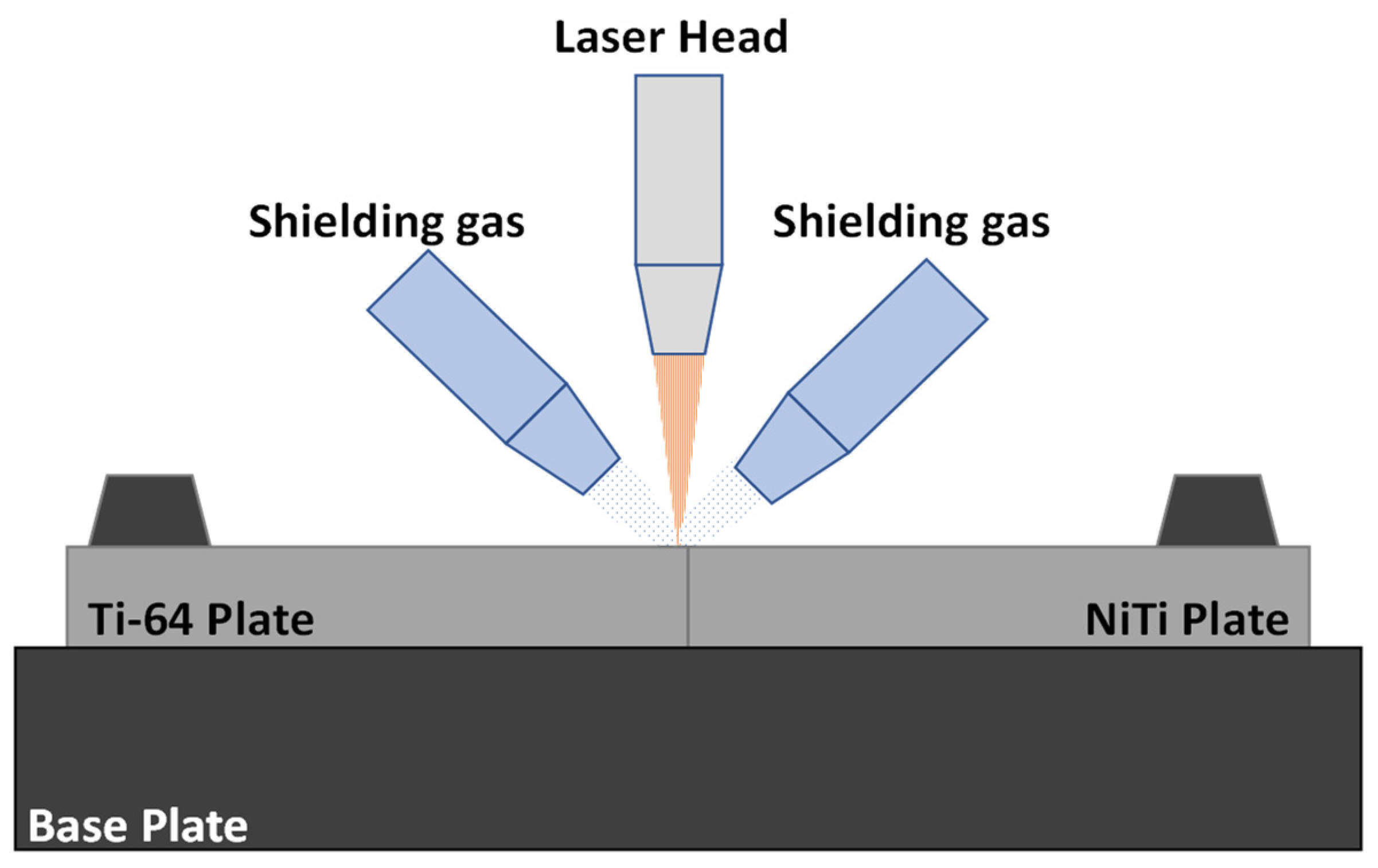
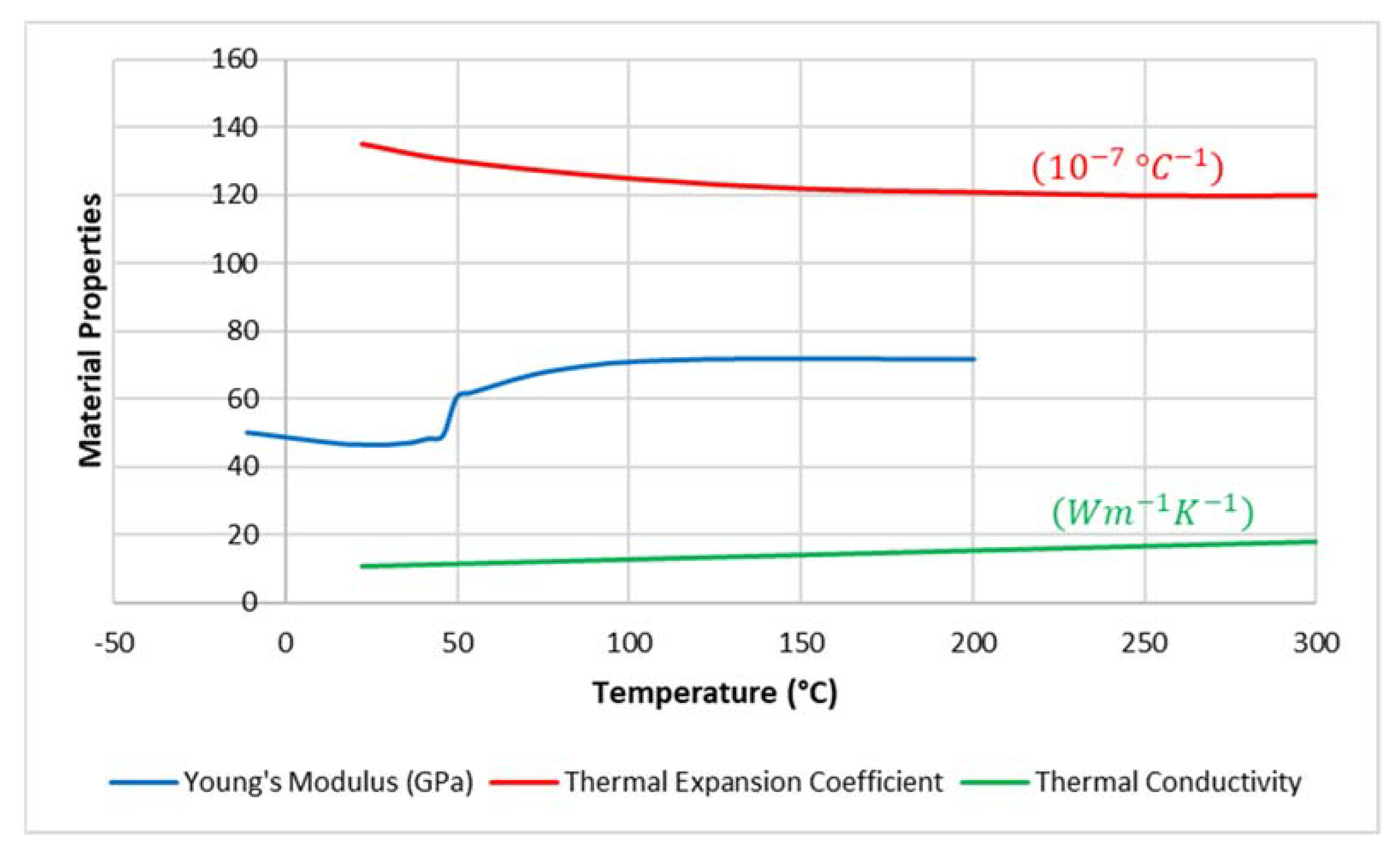

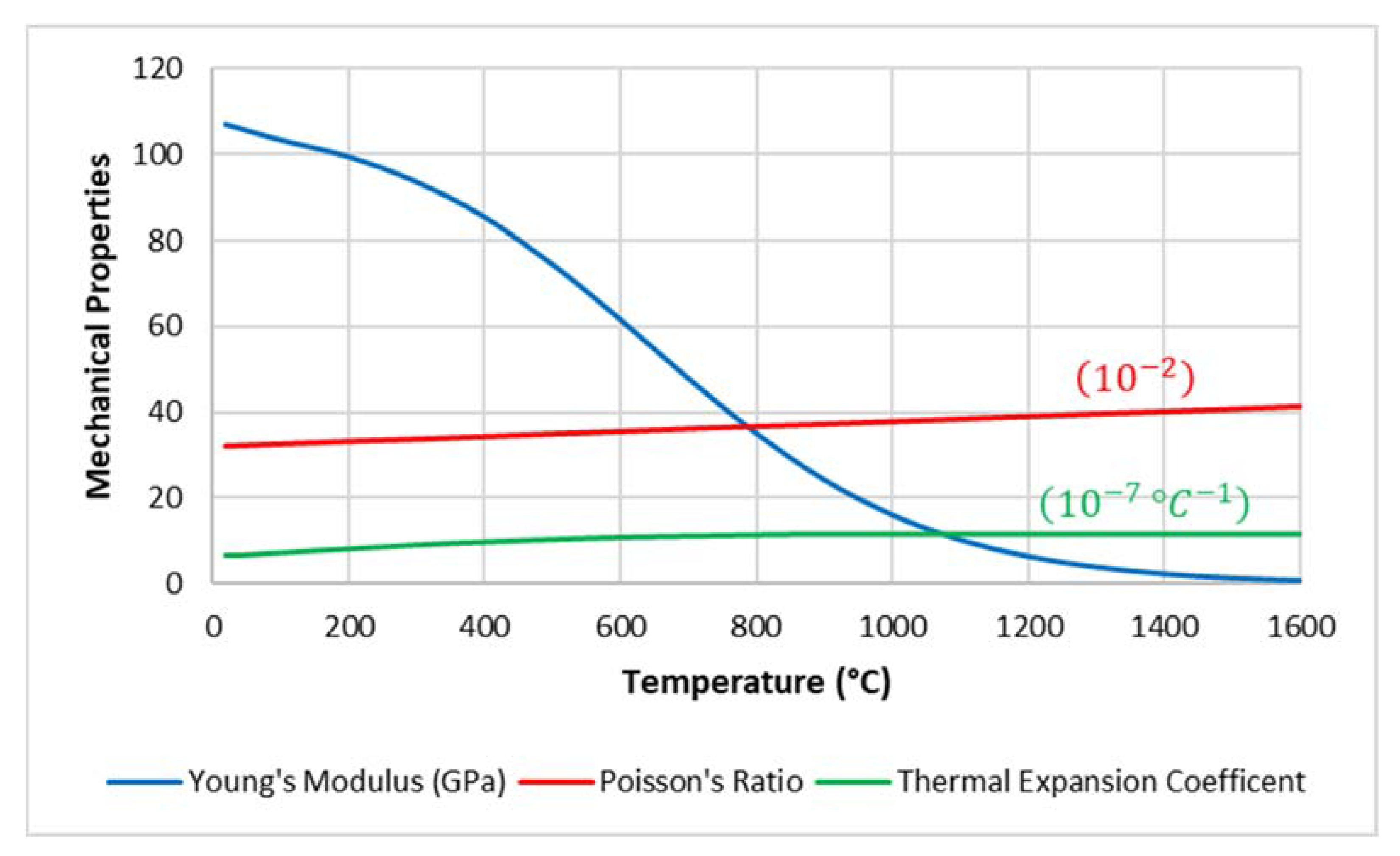
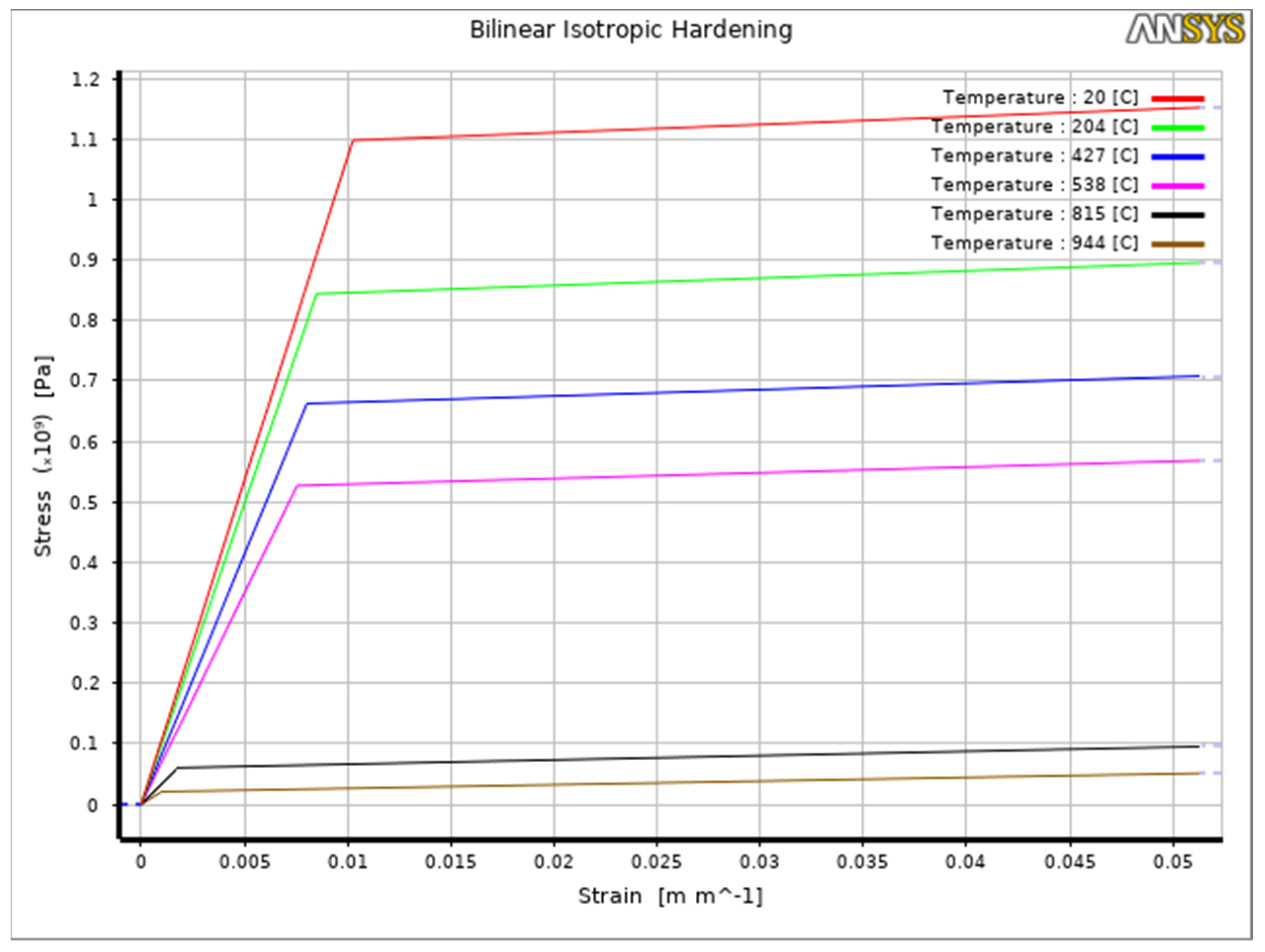

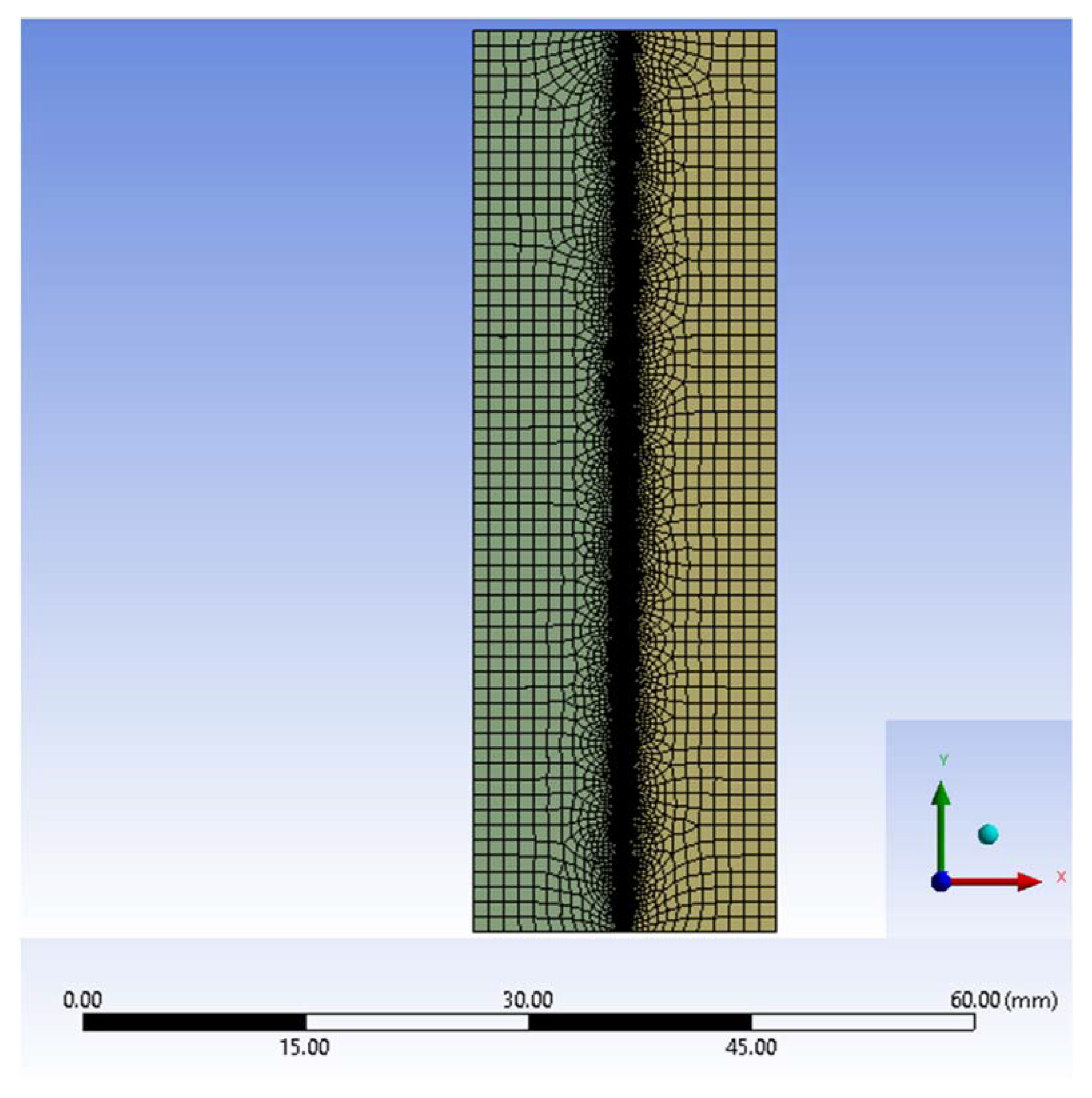
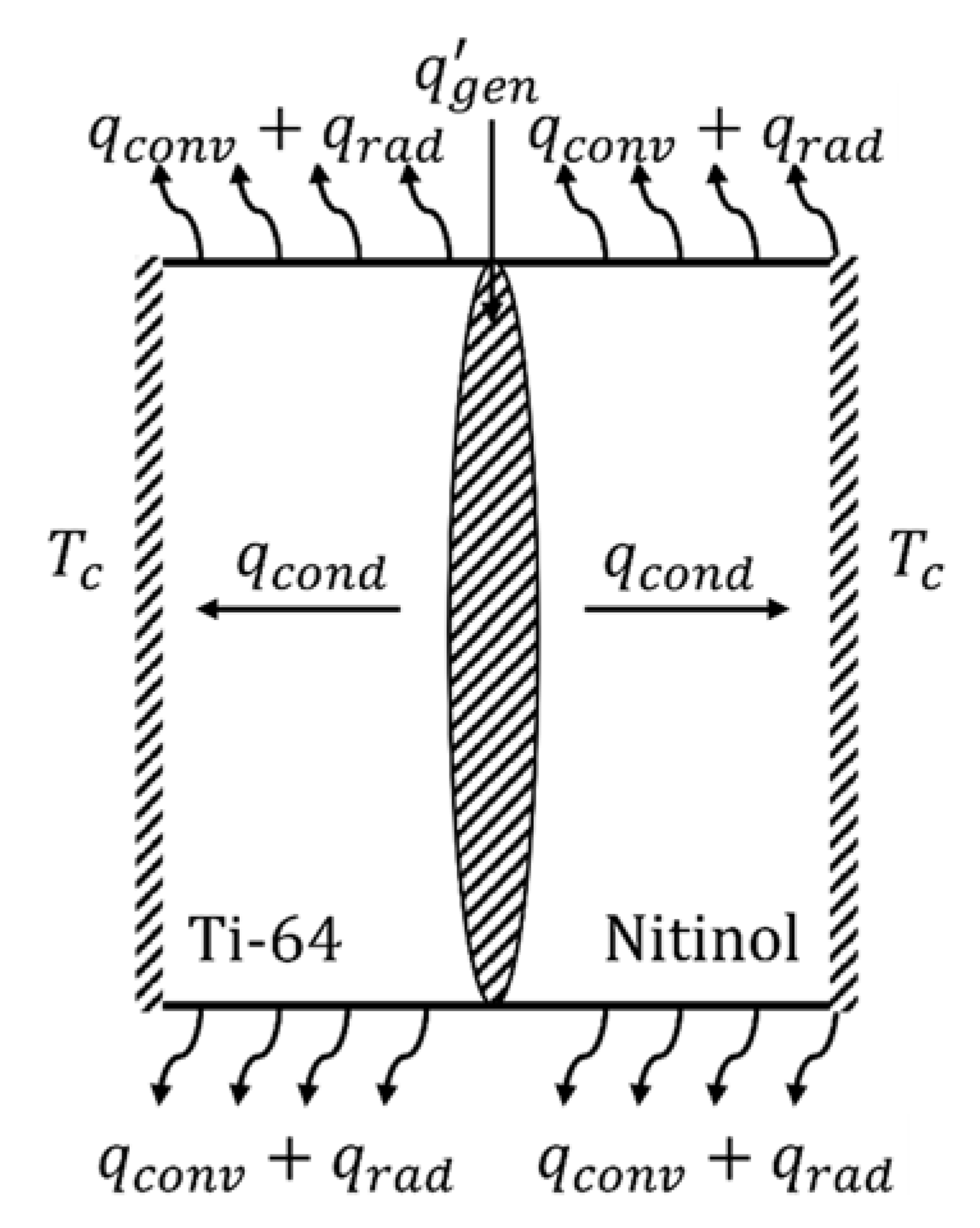
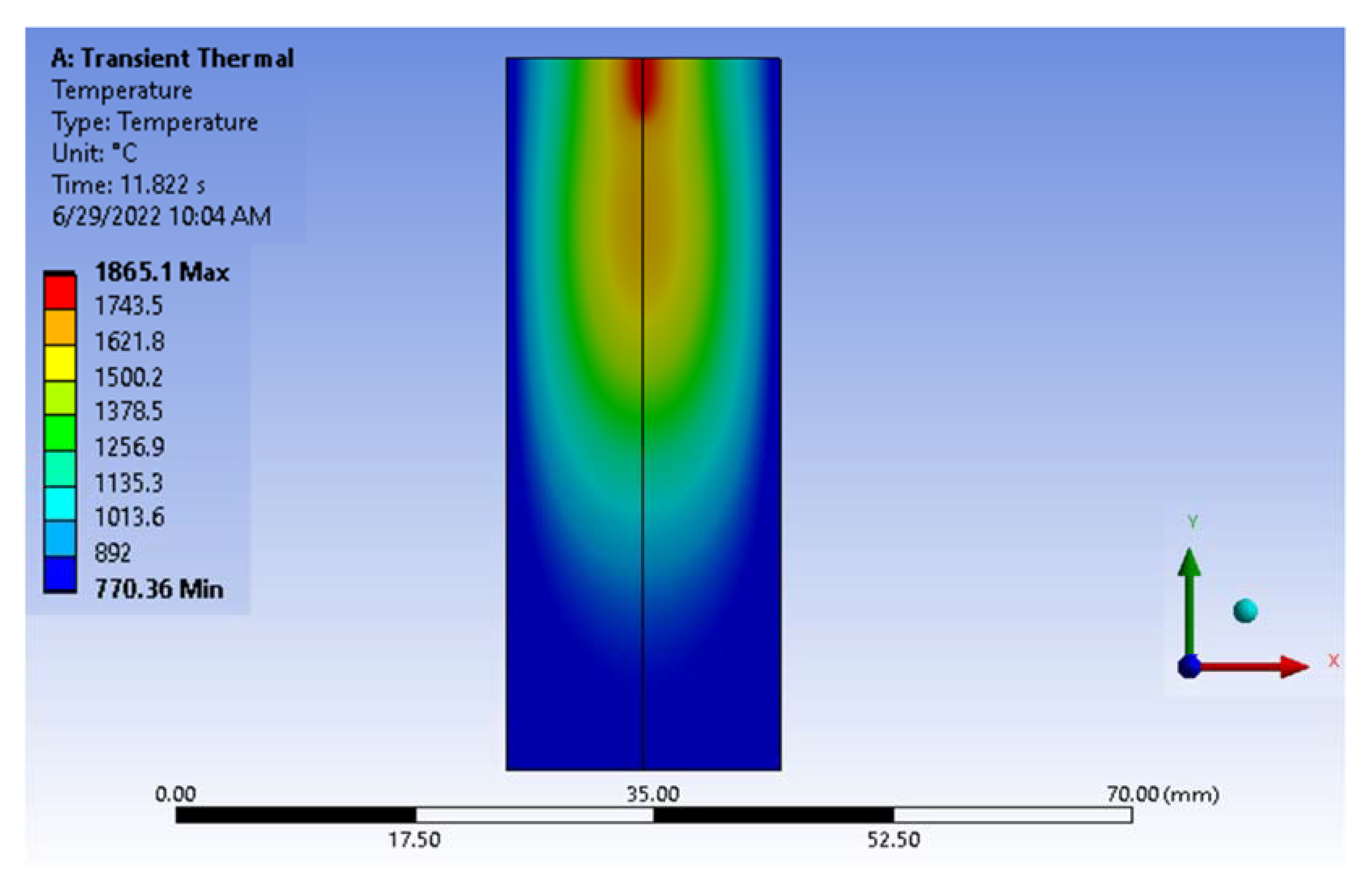
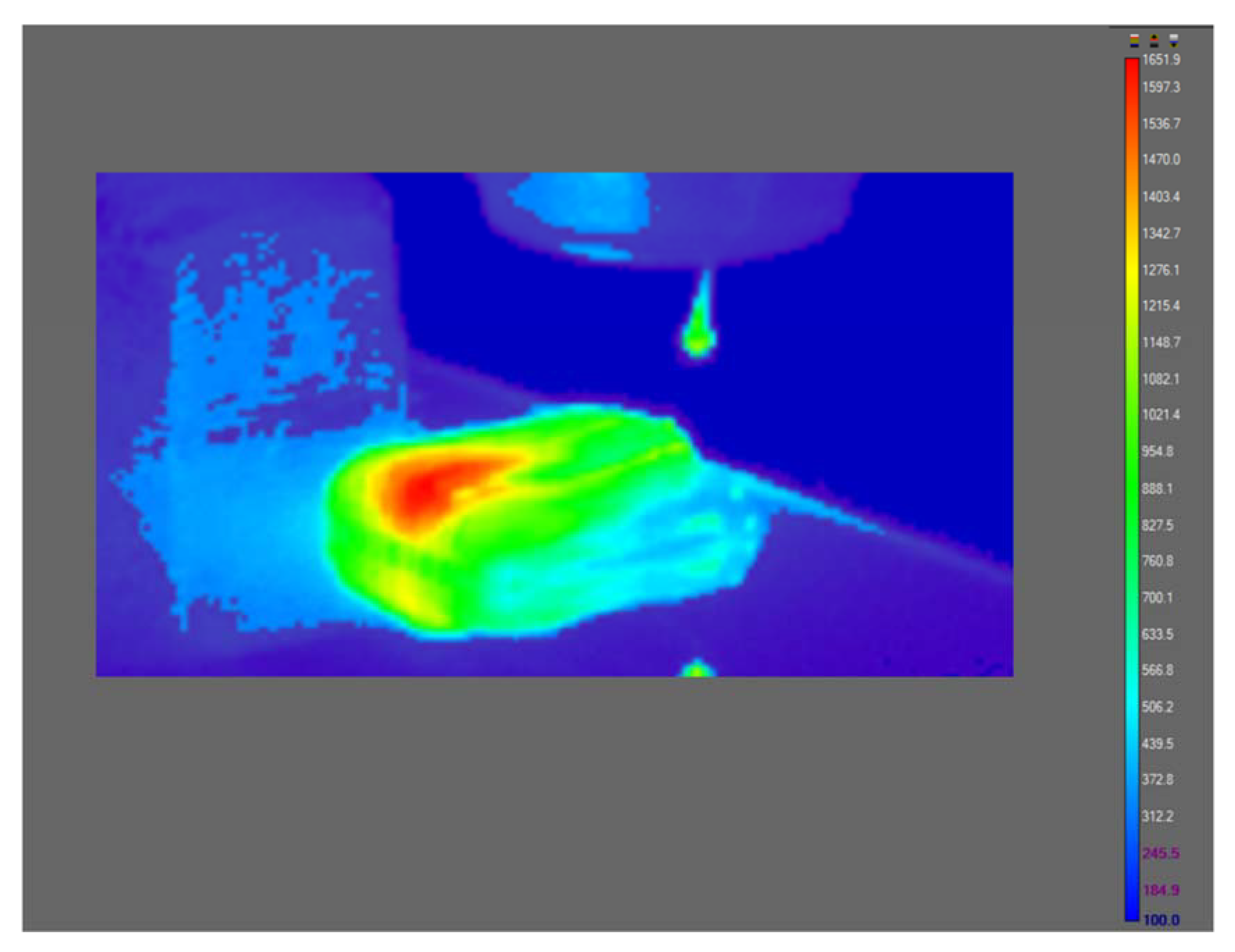
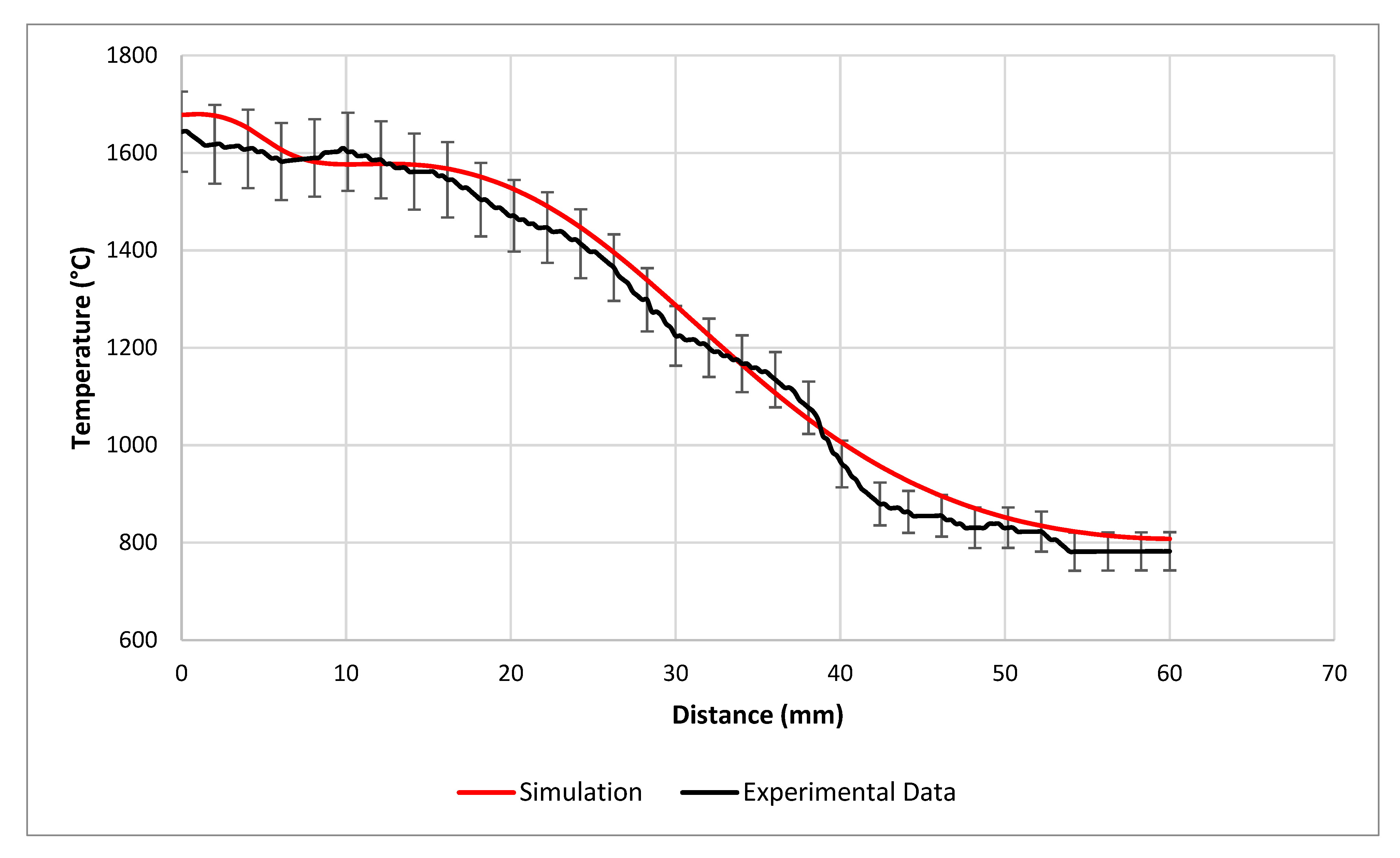
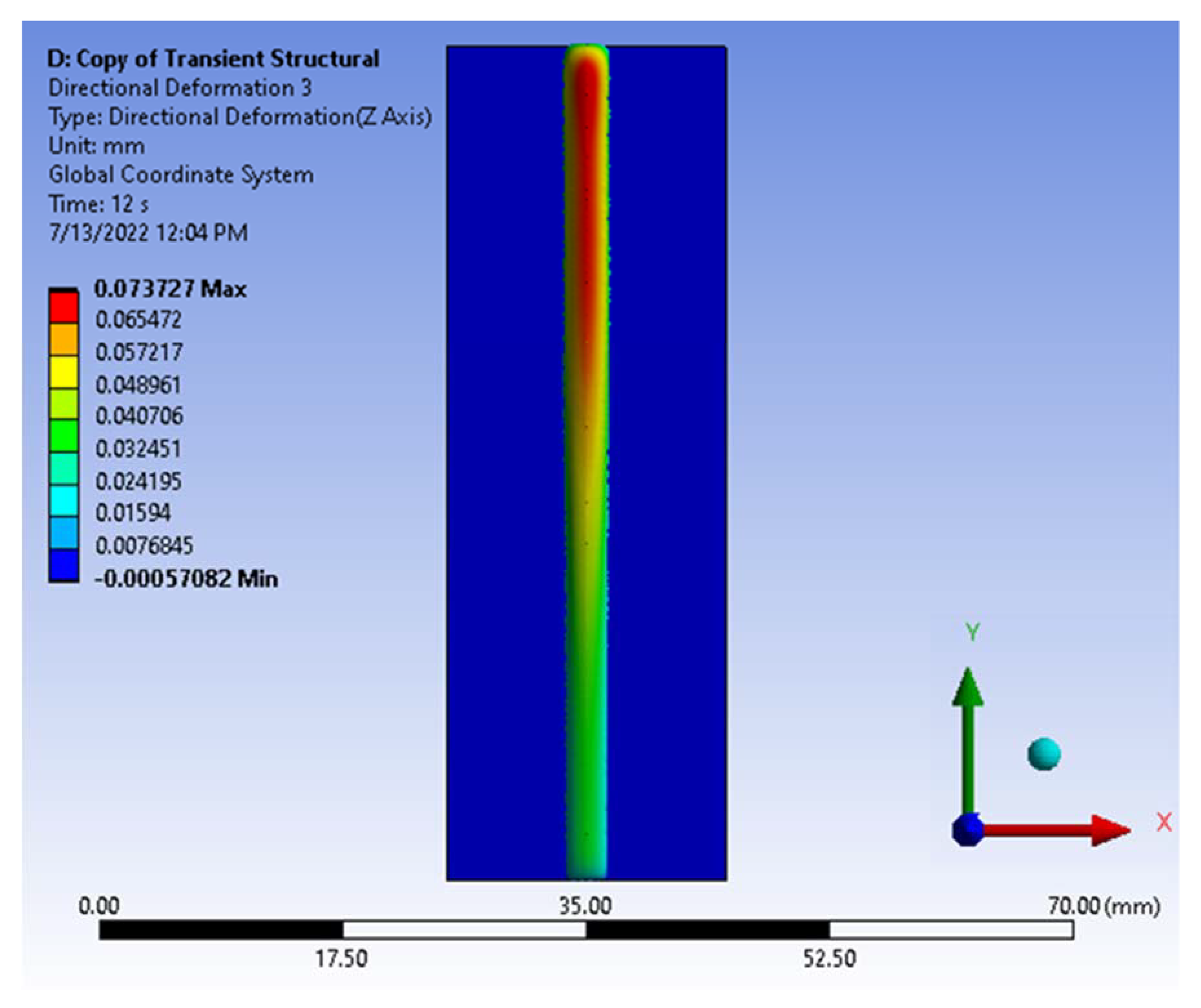
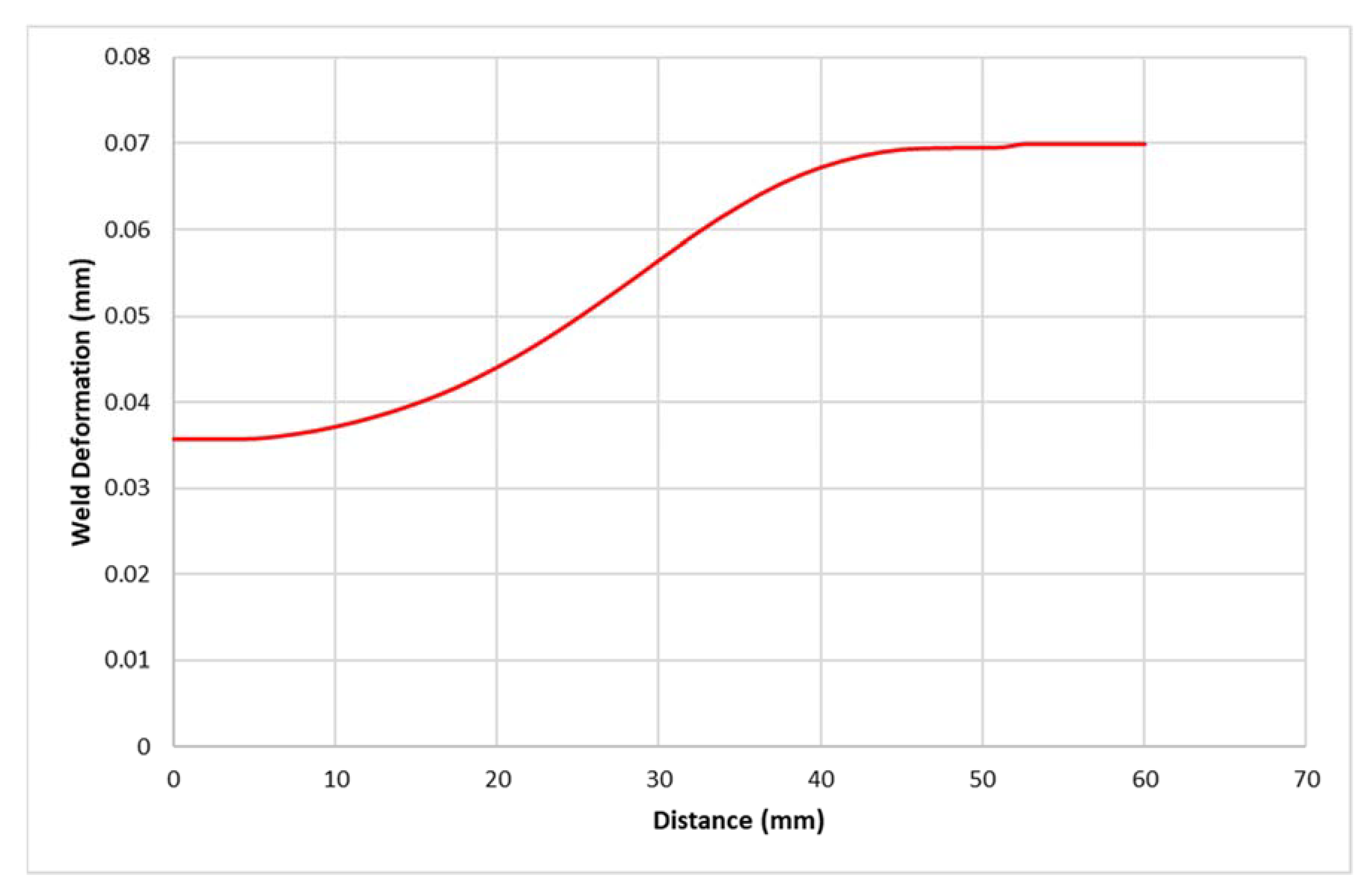
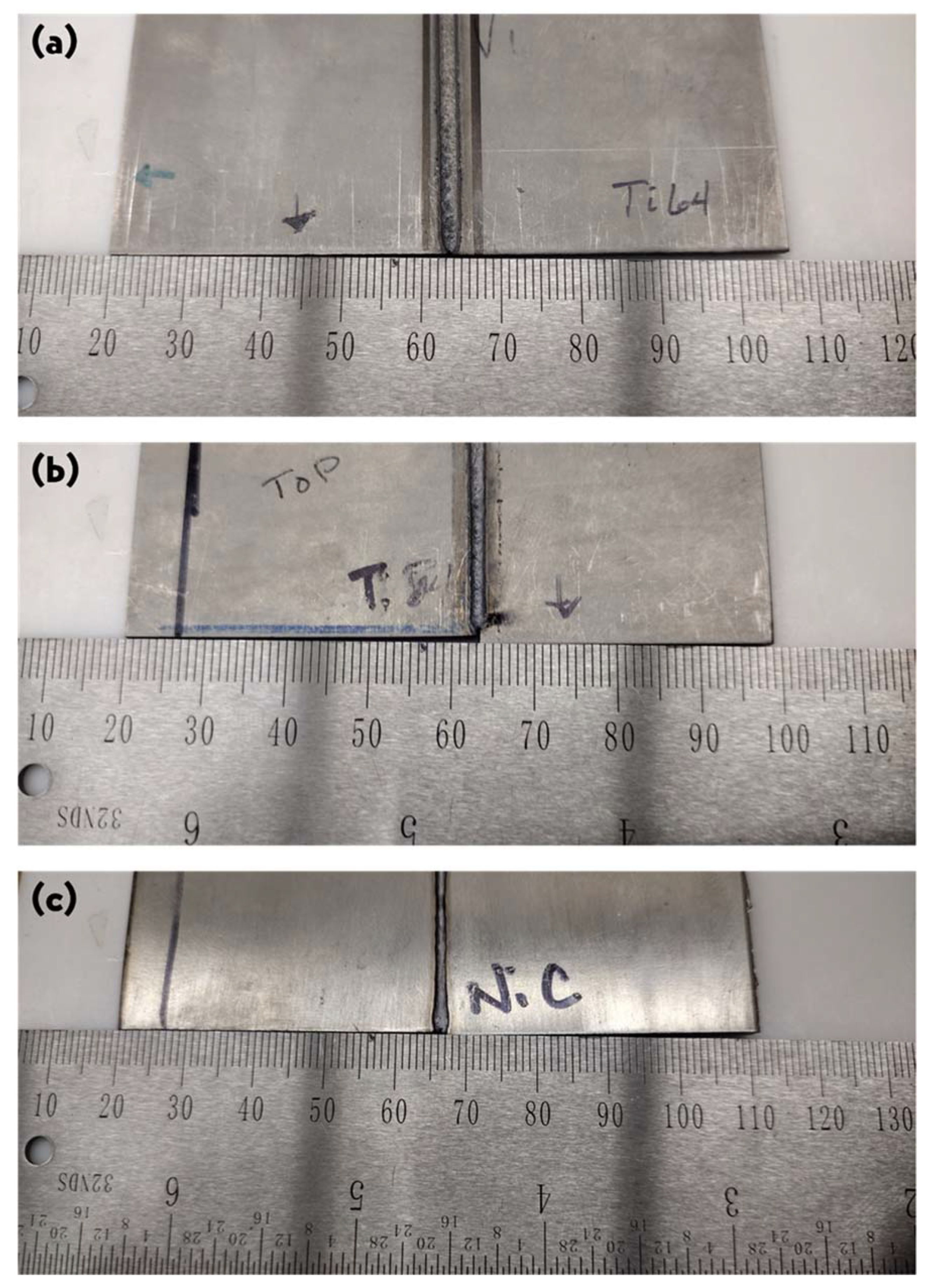
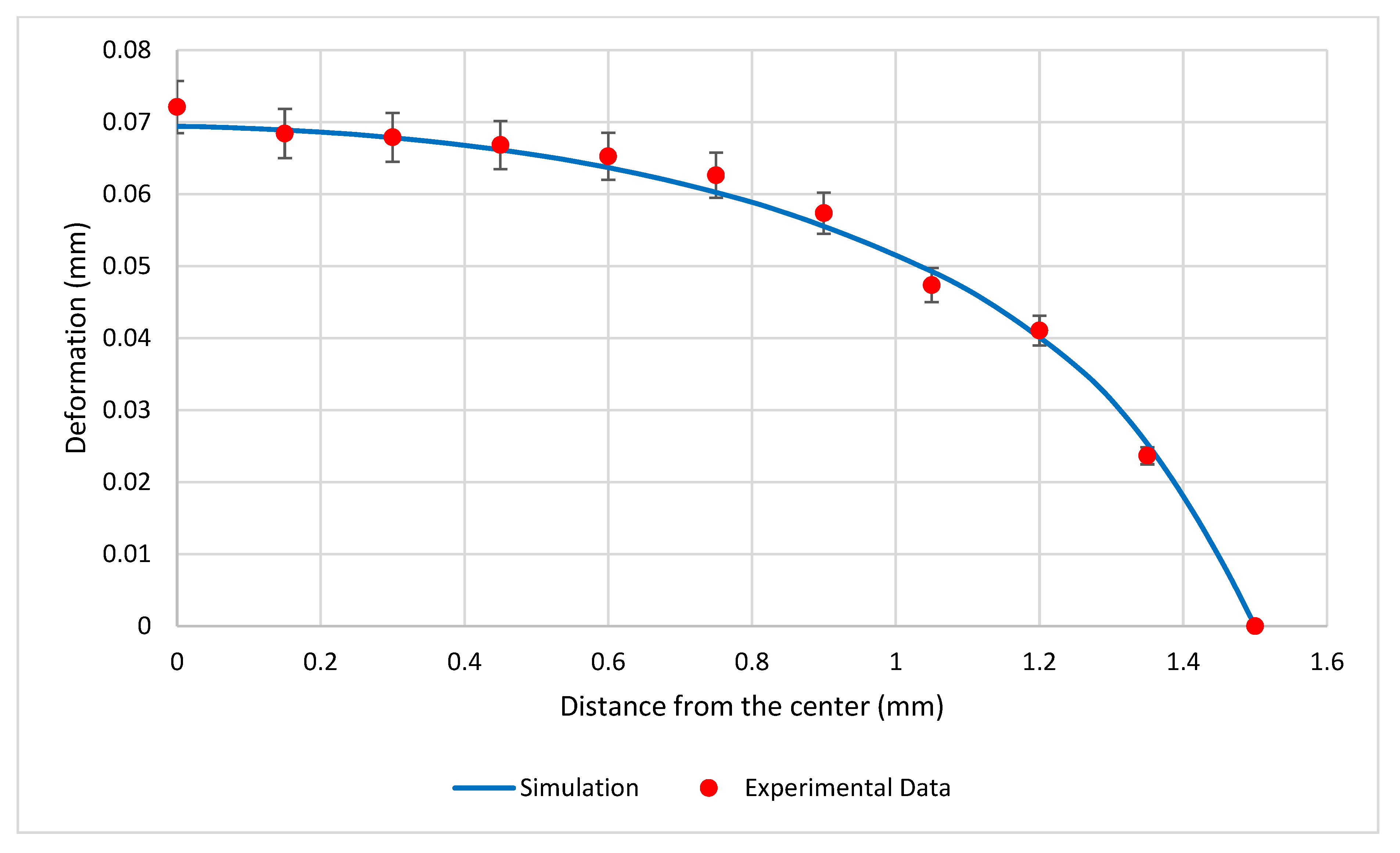
| Trial | Specimens | Laser Power (W) | Heat Input (J/cm) | Weld Speed (mm/s) | Measured Weld Time (s) | Theoretical Weld Time (s) |
|---|---|---|---|---|---|---|
| 1 | 1 | 750 | 1500 | 5 | 12.07 | 12 |
| 2 | 375 | 20 | 3.02 | 3 | ||
| 3 | 75 | 100 | 0.6 | 0.6 | ||
| 2 | 4 | 1500 | 3000 | 5 | 12.07 | 12 |
| 5 | 750 | 20 | 3.02 | 3 | ||
| 6 | 150 | 100 | 0.6 | 0.6 |
| Material | NiTi |
|---|---|
| ρ (kg∙m−3) | 6450 |
| Tm (°C) | 1300 |
| Cp (J∙kg−1∙K−1) | 836.8 |
| σT (MPa) | 895 |
| ν (unitless) | 0.33 |
Publisher’s Note: MDPI stays neutral with regard to jurisdictional claims in published maps and institutional affiliations. |
© 2022 by the authors. Licensee MDPI, Basel, Switzerland. This article is an open access article distributed under the terms and conditions of the Creative Commons Attribution (CC BY) license (https://creativecommons.org/licenses/by/4.0/).
Share and Cite
Glaspell, A.; De la Pena, J.A.D.; Dahal, S.; Neupane, S.; Ryu, J.J.; Choo, K. Heat Transfer and Structural Characteristics of Dissimilar Joints Joining Ti-64 and NiTi via Laser Welding. Energies 2022, 15, 6949. https://doi.org/10.3390/en15196949
Glaspell A, De la Pena JAD, Dahal S, Neupane S, Ryu JJ, Choo K. Heat Transfer and Structural Characteristics of Dissimilar Joints Joining Ti-64 and NiTi via Laser Welding. Energies. 2022; 15(19):6949. https://doi.org/10.3390/en15196949
Chicago/Turabian StyleGlaspell, Aspen, Jose Angel Diosdado De la Pena, Saroj Dahal, Sandesh Neupane, Jae Joong Ryu, and Kyosung Choo. 2022. "Heat Transfer and Structural Characteristics of Dissimilar Joints Joining Ti-64 and NiTi via Laser Welding" Energies 15, no. 19: 6949. https://doi.org/10.3390/en15196949







